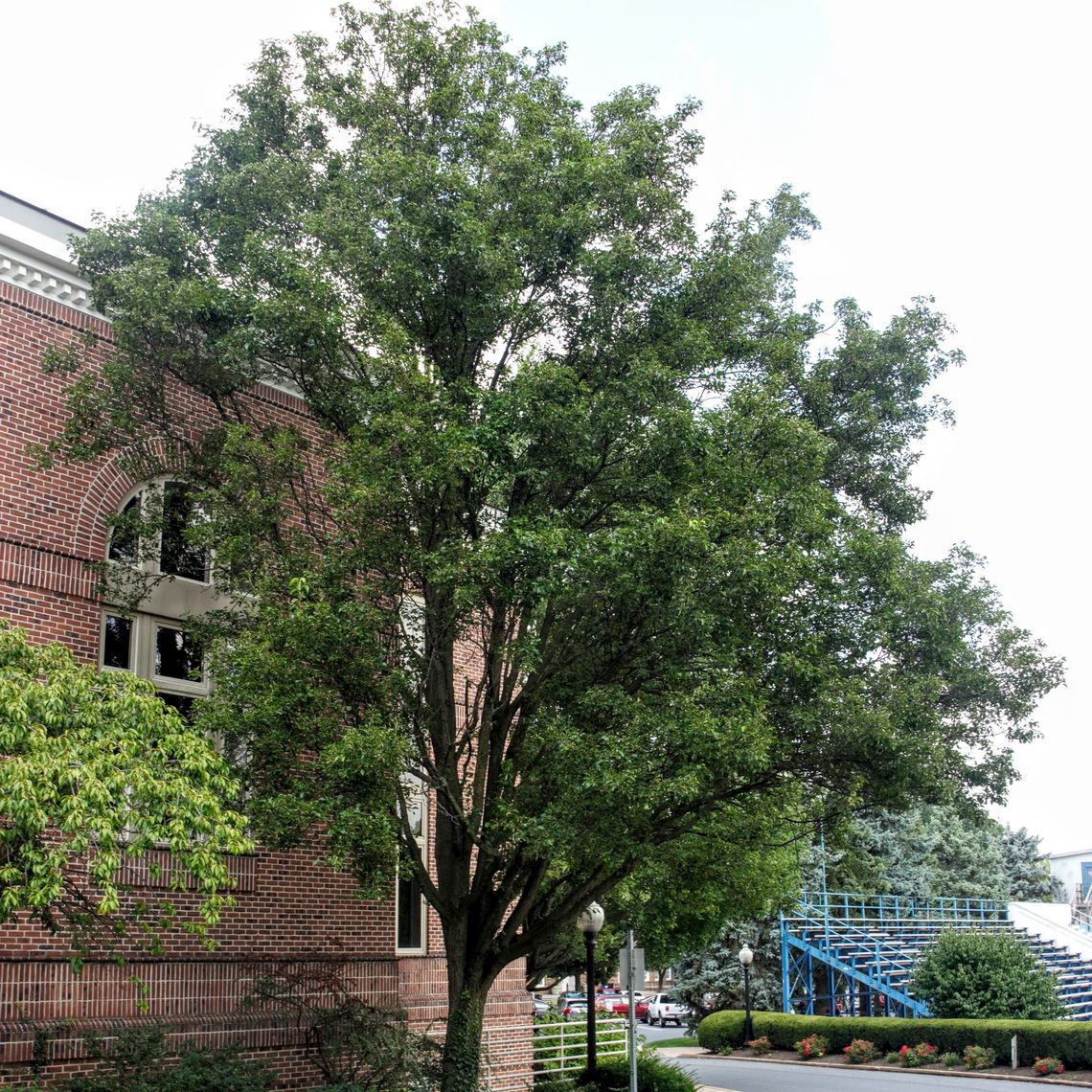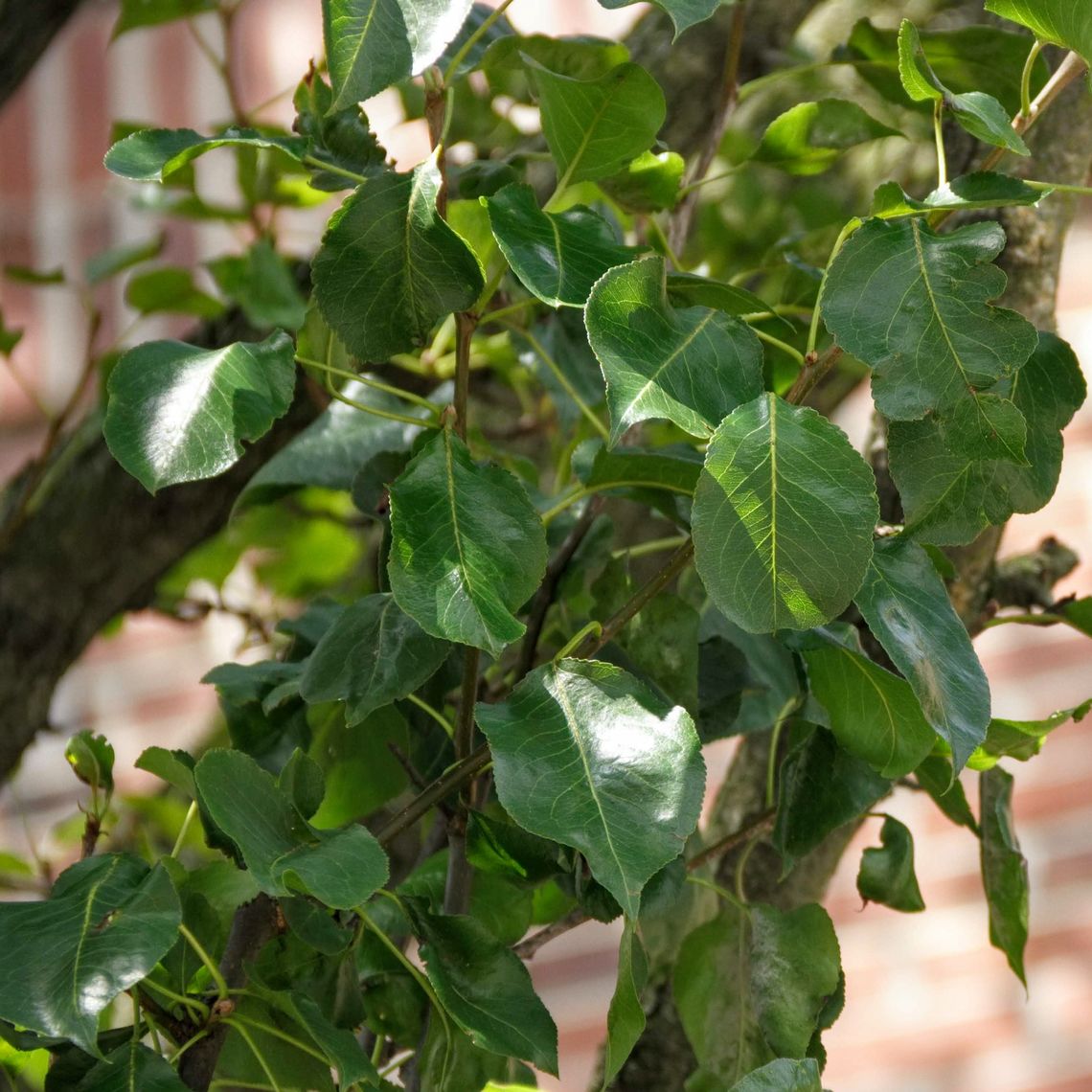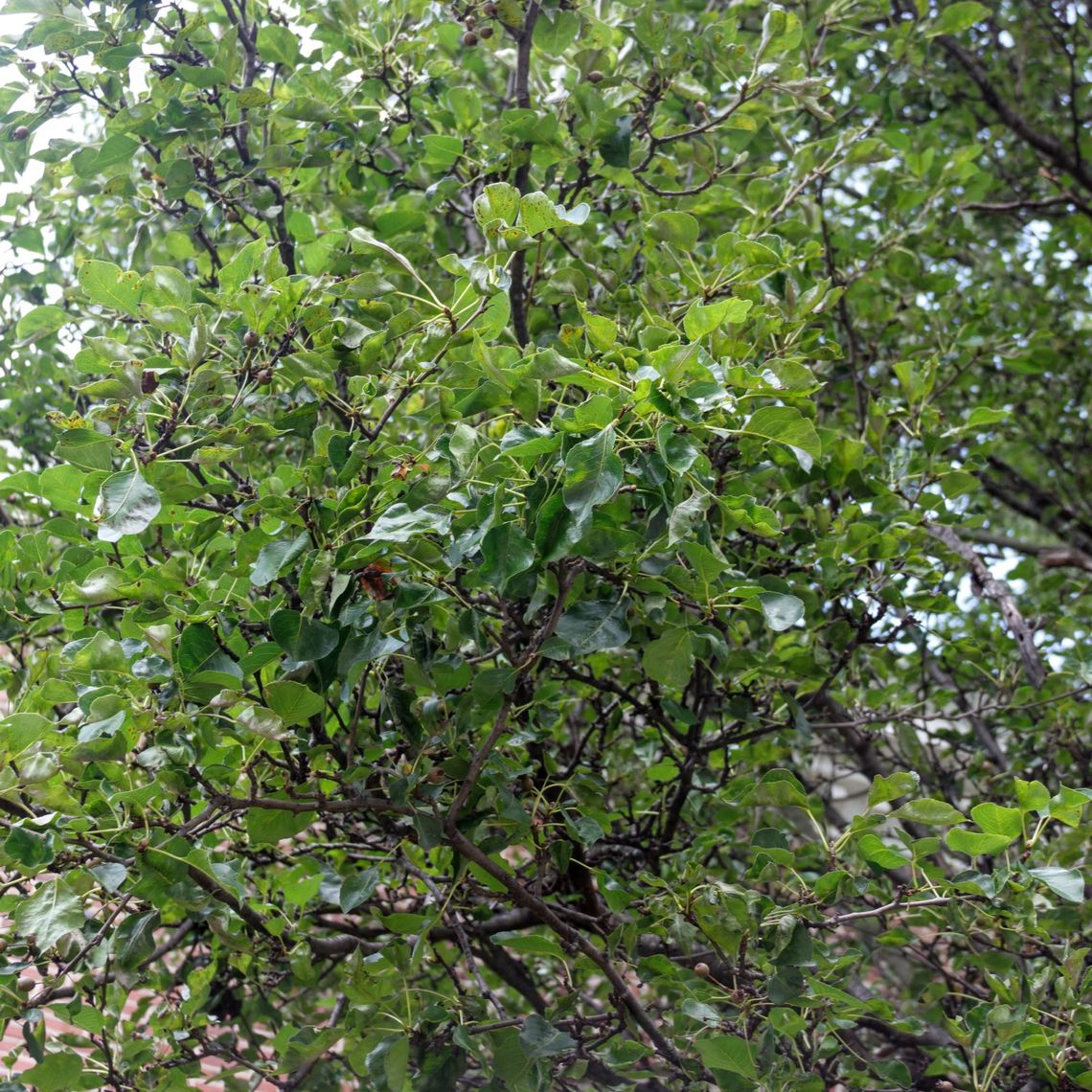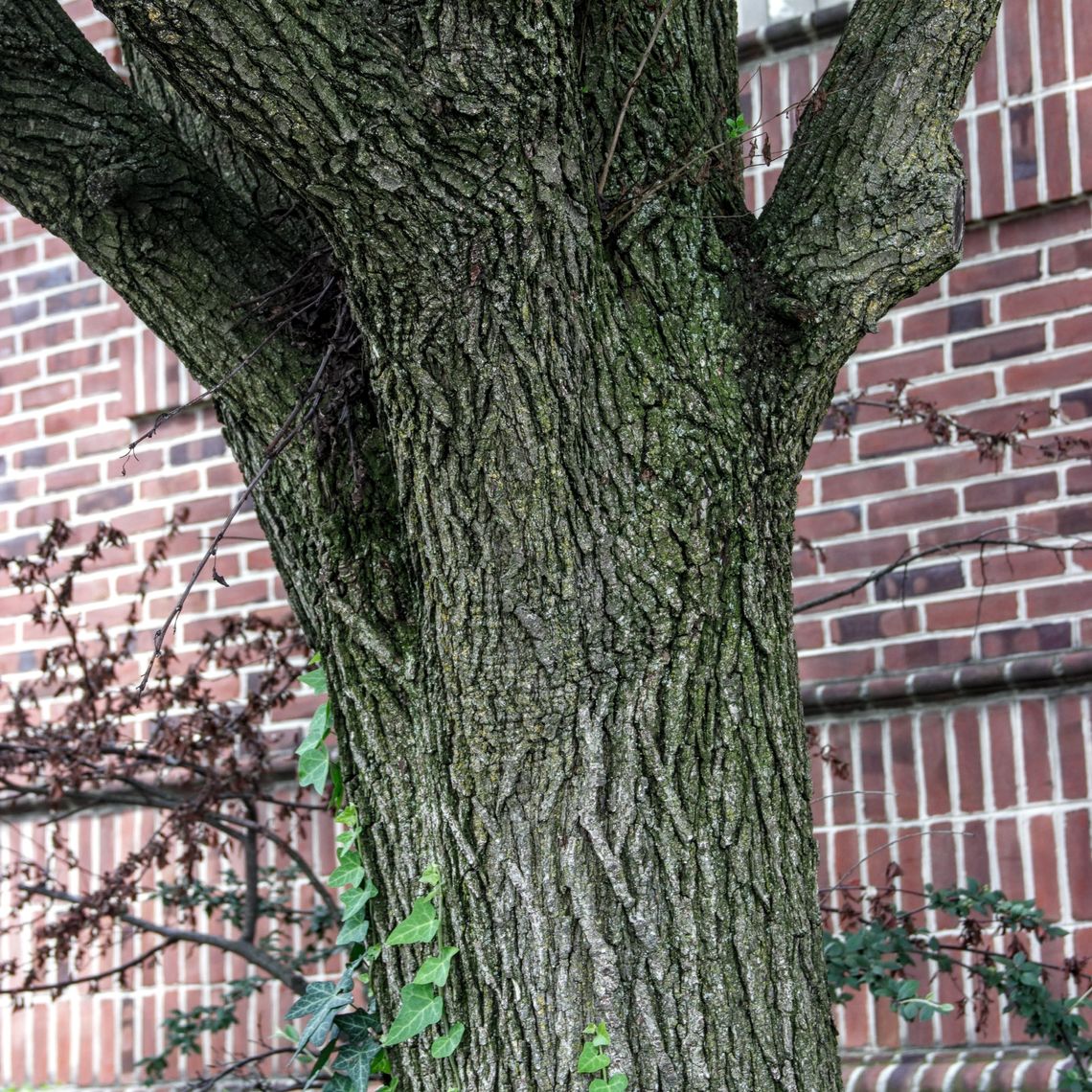Callery Pear (Pyrus calleryana)
The Callery pear is most noted for its abundant blossoms of small, 5-petaled, white flowers that cover the tree in the early spring. While beautiful, these flowers have an unpleasant smell. The tree's leaves are glossy green, narrow, and oval shaped, and turn a red-purple in the fall. The green-yellow fruit that this tree produces is inedible. This tree attracts insect pollinators and birds.
Family: Rosaceae (Rose)
Characteristics: The 1 ½ to 3 inch long leaves are dark green, glossy, narrow, oval shaped, and have wavy margins. In the fall, leaves turn red-purple. In early spring, this tree has an abundant bloom of 5 petaled, small, white flowers. These flowers are followed by inedible, yellow-green fruits. Bark is brown and shiny and becomes gray-brown and ridged with age. This tree is thorny, coarse, and has an irregular shape. It grows 25-35 feet high and 13-16 feet wide.
Foliage: Deciduous (leaves lost seasonally)
Geographic Origin: China, Taiwan, Korea (non-native)
Cultivation Notes: Requires low maintenance. Does best in full sun. Prefers consistently moist and well-drained soils. This tree is tolerant to drought, heat, and a wide range of soil conditions. This tree does have invasive traits.
Number on Campus: 11
Sources: Dirr, Morton Arboretum, Missouri Botanical Garden




